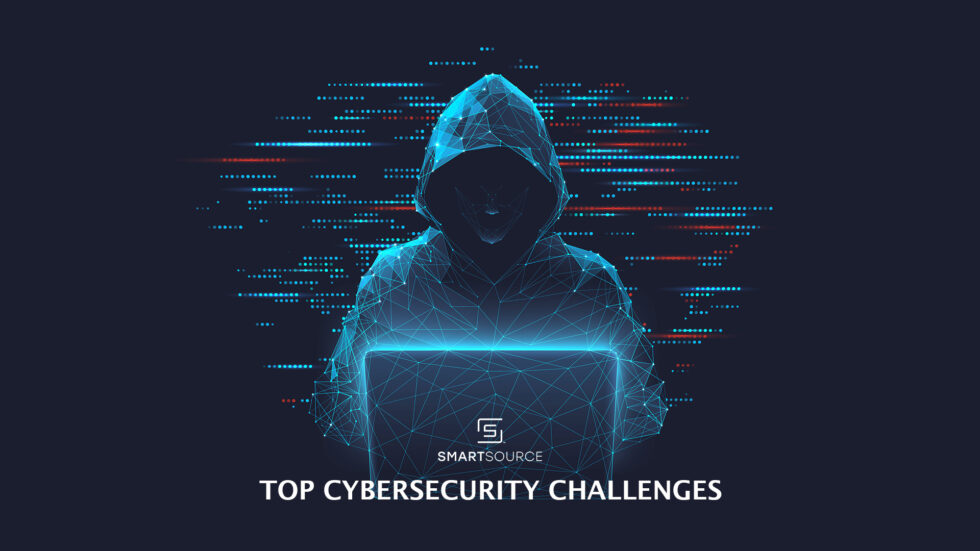In the digital age, businesses increasingly rely on technology to drive growth, streamline operations, and reach customers. However, this reliance comes with significant risks. In fact, the Verizon 2023 Data Breach Investigations Report indicated that 83% of organizations experienced at least one security incident, with about 56% suffering from multiple incidents.
Cybersecurity threats are more prevalent and sophisticated than ever, posing serious challenges to businesses of all sizes. Here are some of the current top cybersecurity challenges businesses should know.
RANSOMWARE ATTACKS

Ransomware has emerged as one of the most disruptive forms of cybercrime. This type of malware encrypts a victim’s data, making it inaccessible until a ransom is paid. Aside from the ransom demanded, the costs associated with ransomware attacks can be staggering.
According to Cybercrime Magazine, in 2023, the global cost of ransomware attacks was estimated to exceed $20 billion. This includes not just ransom payments but also the broader impact, including downtime, lost productivity, recovery efforts, and damage to reputation.
With ransomware remaining the tool of choice for many big game hunting (BGH) adversaries, businesses today must invest in robust backup solutions, employee training, and advanced security software to mitigate this threat.
PHISHING AND SOCIAL ENGINEERING

Phishing remains a prevalent and effective method for cybercriminals to access sensitive information. Attackers often impersonate trusted contacts or organizations, tricking employees into revealing passwords, financial information, or other confidential data. And the fall-out can be crippling for organizations: a data breach that exposes 10 million records costs businesses $50 million on average.
On the other hand, social engineering attacks are a form of cyberattack that relies on human interaction and psychological manipulation to trick people into divulging confidential information or performing actions. The attack can be an urgent request for help in a friend’s email or a notification of being a “winner” from a trusted source.
Even security vendors like CrowdStrike are feeling the force of social engineering. Scammers are using these trusted brands to send phishing emails to employees of a possible malware infection and a phone number to call to remove the installed malware. Regular training and awareness programs are essential for equipping employees to recognize and resist phishing attempts.
SUPPLY CHAIN VULNERABILITIES
Businesses often rely on third-party vendors and service providers for various aspects of their operations. However, these third parties can introduce vulnerabilities into the supply chain, providing an entry point for cyberattacks. Such was the case with Target’s retail breach in 2013 when Target gave network access to a third-party HVAC vendor. The vendor’s weak security allowed the attackers to gain a foothold in Target’s network.
A supplier network can quickly cascade like a domino effect, harming multiple businesses. Companies must thoroughly vet their partners and implement strict security protocols to safeguard against supply chain risks.
INSIDER THREATS
Insider threats, whether malicious or accidental, are also a significant concern for businesses. Employees, contractors, or partners with access to sensitive information can intentionally or unintentionally compromise security.
Insider threats are challenging to detect because they involve individuals who are already trusted with access to critical systems and data. Implementing strict access controls, monitoring user behavior, and fostering a culture of security awareness can help mitigate these risks.
ADVANCED PERSISTENT THREATS (APTs)
Advanced Persistent Threats are prolonged and targeted cyberattacks in which an attacker gains unauthorized access to a network and remains undetected for an extended period. APTs are typically carried out by well-funded and skilled adversaries, such as nation-states or organized crime groups, aiming to steal valuable data or disrupt operations.
For instance, Deep Panda, an Asian cyber espionage group, entered the limelight in 2011 after hacking Adobe and stealing 38 million users’ data. Combating APTs requires a multi-layered defense strategy, including continuous monitoring, threat intelligence, and incident response planning.
REGULATORY COMPLIANCE
With the increasing number of data protection laws and regulations, such as GDPR, CCPA, and HIPAA, businesses must ensure they comply with various cybersecurity requirements. At its core, organizations must achieve compliance by establishing risk-based controls that protect information confidentiality, integrity, and availability (CIA).
Non-compliance can result in hefty fines, legal consequences, and potential damage to a company’s reputation. Staying current with regulatory changes and implementing the necessary security measures is crucial for avoiding penalties and maintaining customer trust.
CLOUD SECURITY RISK
Securing cloud-based environments has become a top priority as more businesses migrate to the cloud. While cloud providers offer robust security measures, the shared responsibility model means that businesses must also actively secure their data and applications.
Misconfigured cloud settings, inadequate access controls, and a lack of visibility into cloud environments can expose businesses to significant risks. Regular audits, strong encryption, and access management are essential for cloud security.
EVOLVING THREAT LANDSCAPE
The cybersecurity landscape is constantly evolving, with new threats and attack vectors emerging regularly. Businesses must stay vigilant and adaptive to respond to these changes effectively. This requires ongoing investment in cybersecurity tools, employee training, and staying informed about the latest trends and threats.
These threats can also be mitigated with trusted IT partners that have solutions in place. A good partner will understand the most pressing threats that could affect your organization and have the tools and technology to take a proactive approach to security.
In today’s digital world, cybersecurity challenges are unavoidable but also manageable. Having the right cybersecurity partner on your side can help you build a resilient stance to withstand the ever-changing threat landscape.

